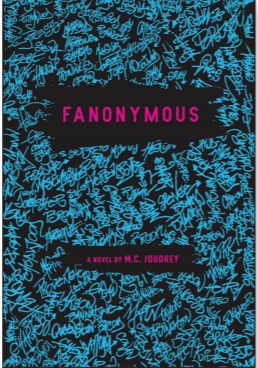
by M. C. Joudrey
Excellent, occasionally lyrical prose, but the narrator does something I found difficult to deal with: he sets up far too many questions in that 31-page opener without giving the reader any answers. It became irritating and I stopped trusting the narrator/writer to close the loop on any of the questions, mysteries, or quandaries he posed. As the narrator often says, without explanation, It’s just one of those things. Also, the writer used an omnipotent POV, which I did not mind, exactly, but you see it so rarely nowadays that it was almost jarring to me. And if the narrator was “omnipotent,” why wasn’t he sharing any answers to the questions he posed the reader? It felt like an irritating betrayal, yet the quality of the prose drew me on
The story really started on Page 32. Up until then the main character was a narrator who casually violated the 4th wall at will, with a cast of confusing extras. The other major character was the city of Winnipeg, in odd detail and in the near future, where it had been a victim of a hacking attack against cars and a government monetary move that changed their lives. But these were just added hardships for the residents, the Winnipeg residents who called themselves “Peggers” — another in a slew of their other seasonal challenges (which was also just one of those things). Still, we here finally get the hint of a theme: the question was not, how or why did someone hack things, but…why Winnipeg?
Anyhow, back to page 32. There we get treated to the somewhat tight 3rd person POV of a law enforcement woman who is a hacker. But the next chapters have nothing to do with her; instead, we get treated to some native Peggers like Horace who befriend a newcomer American Winnipeg resident, Jack. Oh, and one of Horace’s friends is a casually efficient hacker. Then the narrative wanders off into more odd things about hackers (okay maybe this is relevant). And banks. It’s got to be leading up to something, right? And it has this great prose, I know I mentioned the great prose, with phrases such as “…he could sell a teenager a second set of parents.”
So you read on, but you begin to worry that the book is going to be a political or philosophical screed by this cynical hipster-I’m-not-a-hipster narrator. (The fact that the chapter headings are printed on protest signs may have had something to do with that impression.) You keep looking for characters, and for things to make more sense. You are told, continuously, that the narrator will tell you more about this or that later, if there’s time. And who is this fellow Dickie that the narrator keeps talking about? Soon there was another clue, involving a factory that makes an herbal tea that keeps in the local mosquitoes from biting, and the man who owns the factory, Kip, who is friendly with Horace and therefore, the newcomer American, Jack. Oh, and it all has something to do with pomegranates. The narrator and the characters repeatedly told us that in Winnipeg, ‘tis the season… for pomegranates. There is a magical pomegranate tree. And I suppose that’s also just one of those things.
Much of the book is the narrator lamenting about the changes in modern life, some of which haven’t happened yet. But he predicts in the past tense because, after all, this book is supposed to be in the near future. These laments are made as commentary on what the characters are doing, mostly, and at 100 pages in I decided I could condense the actual things that happened to actual characters in Fanonymous into about five pages.
But still, the prose. And there’s got to be a payoff to the story, right? At this point the author, when he digresses, occasionally even tells us that this information will not be useful later on. Which was good to know because I had started wondering if any of it would be useful later on.
I made it to page 141 before I started to skim. Feral children in IKEA, the cell phone addict neighbor, and more mysteries piled up. Elderly computer game addicts had long discussions about which obsolete games were the best. And I just wanted to get to the end of the book. In the process I discovered that the mysterious Dickie had a last name, which upped the probability that he was an actual character being quoted. Maybe.
Ah, okay. We learned earlier that Jack-the-American was an artist, and that he was running for his life from something in New York. Now we learn that he was a famous street artist who did subversive graffiti, and many governments and corporations want him for taking them down. A scary blind woman finds Jack, blackmails him, and he is forced to do subversive graffiti in Winnipeg. And the hacker detective chick is back. It looks like — please God — the fact that one Pegger we met who does photography and develops his own film, the coke snorting cop, the herbal tea factory, the causal hacker, and others with various quirks are all going to wrap into something that resembles a plot!
Skim, skim, skim. Scary blind lady is doing hacker things, too. Cyberpunky things happen. Yep – it all hangs together now, so I can’t tell you how it ends because there is actually a great ending I don’t want to give away. In a weird way it was good, but unfortunately I was not the target audience for Fanonymous.
I guess it’s just one of those things.
